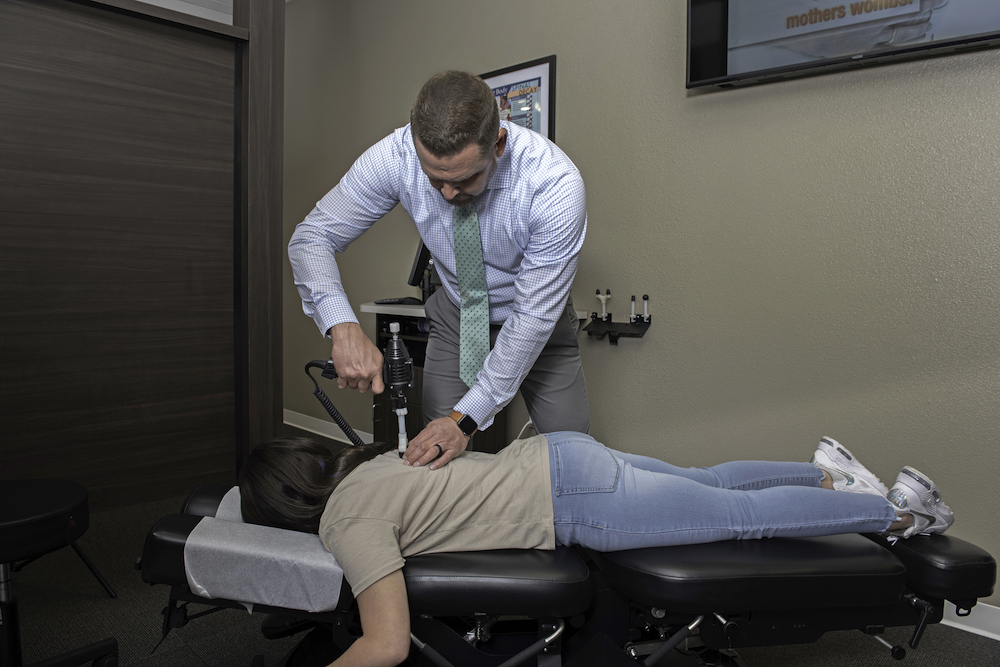What is Sciatica?
3 min read

If you’re experiencing pain in the back that runs down one of your legs, this could be sciatica (sounds like sigh-at-i-ca). It can also come with numbness or tingling in the legs and may be worse when you sit down. The root cause of sciatica pain is typically an issue in the lower back. In most cases it is acute (meaning that it lasts a short period of time following an injury), but it can become chronic (meaning it lasts an extended period of time or may even be permanent), depending on what’s causing the sciatic nerve to be pressed upon.
How Does Sciatica Pain Happen?
In your lower back there is a bundle of nerve roots. These form the sciatic nerve, which sends signals down through the hip area into each of your legs. Pressure on the sciatic nerve causes pain to radiate from your back down into your leg (usually only one leg, but occasionally both). It can also cause a tingling sensation. Although much of the pain of sciatica is in your leg, the root cause is always in your spine.
Sciatica can cause several different types of pain – from the lower back to the hip and/or leg. The pain in the leg is usually a burning, tingling, or searing pain that radiates down, sometimes all the way into the toes. Some individuals have difficulty moving the leg and foot or may experience weakness in the leg that can make it hard to walk.
What Causes Sciatica?
Sciatic pain is most often caused by a herniated or bulging disc at or near the point where the sciatic nerve leaves the spine, resulting in a pinched nerve. However, there are some other things which can cause sciatica:
- Degenerative disc disease. This is a normal part of aging, but in some cases it can become more serious, resulting in a weakened disc and inflammation that irritates the nerve roots. In some cases this can also cause bone spurs in the spine.
- Isthmic spondylolisthesis. This is caused by a tiny stress fracture that might not be noticed, except that it lets a vertebra slip forward on top of another, which can cause a pinched nerve.
- Lumbar spinal stenosis. This is a narrowing of the spinal canal, and is relatively common in people sixty and over. It's often associated with arthritis, which can also contribute to symptoms.
- Sacroiliac joint dysfunction. When the joint at the bottom of the spine becomes irritated and compromises the nerve.
- Pregnancy (the baby's weight puts pressure on the lower back, which can sometimes pinch the sciatic nerve, and it can also cause piriformis syndrome).
Sciatica tends to become chronic more often in older individuals due to age-related changes in the spine.
Can You Prevent Sciatica?
It is not always possible to prevent all causes of sciatica, especially those associated with aging. However, here are a few tips to protect your back and help reduce your risk:
- Keep proper posture when sitting.
- Use good body mechanics and always lift heavy objects with your knees not your back.
- When working out, make sure to do some core exercises every week. A lot of people neglect their lower core (reverse crunches are good for that, as are exercises which target your glutes). Consider pilates.
How is Sciatica Treated?
Because sciatica is usually a symptom caused by another condition, the best way to reduce sciatica pain is to treat the underlying problem. Sciatica treatment can range from pain management to, in extreme cases, surgery. Dr. Thomas will typically review x-rays to establish the cause of the sciatica, and to help determine a treatment plan. Bed rest is no longer prescribed for sciatica, as recent studies indicate it is not the most effective method and that exercise can be crucial to the healing process. Sciatica pain relief can achieved using the following treatments:
- Nonsurgical spinal decompression to treat herniated disks. This is a relatively new, non-invasive treatment generally offered by chiropractors. It is done by gently stretching the spine for a period of 15 to 30 minutes per treatment, over several weeks. This reduces pressure on the discs around the sciatic nerve, which can free up the nerve, and also improves water and nutrient flow to the discs so they can heal. Thus, it can heal both pinched nerves and herniated or bulging discs.
- Electrical muscle stimulation, including the use of a TENS machine to relieve pain, especially for individuals with chronic sciatica.
- Low back conditioning and stretching exercises to strengthen the spine and speed healing. Exercising with a foam roller can sometimes be helpful.
- Cold packs/compresses.
- Pain relievers, muscle relaxants and anti-inflammatories.
Most cases of sciatica are acute and resolve in four to six weeks. Chronic patients may need regular visits to a chiropractor and may be referred to a pain management specialist.
If you are experiencing sciatic pain, then chiropractic care, especially spinal decompression can help you. If you are looking for sciatica treatment in The Woodlands area
 and see what we can do to help you relief your pain.
and see what we can do to help you relief your pain.







